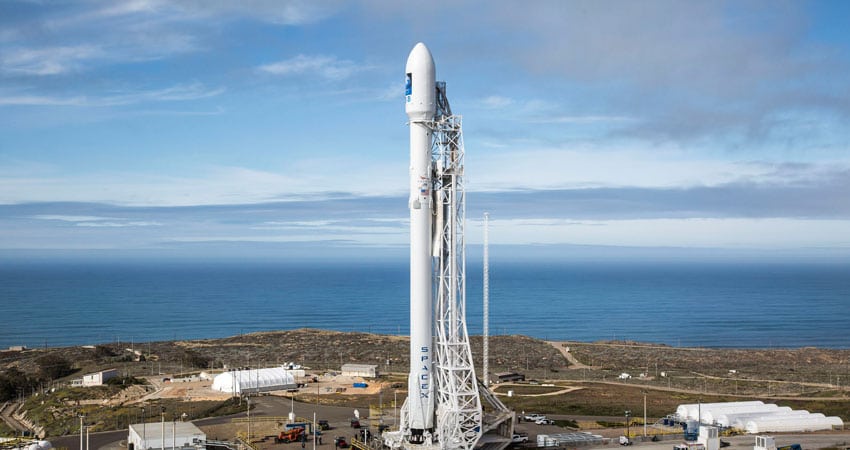Jeff Bezos and the innovation teams at Amazon seem to have cornered the market on far-out ideas that push the envelope for ecommerce distribution, from delivery drones to blimp warehouses to even an undersea DC. That is, until Elon Musk and his hardy band of rocketeers came along and shot the moon – or Mars.
The enigmatic founder of Tesla and SpaceX is proposing that his Big Falcon Rocket (BFR) – the same vehicle he intends to use for a cargo landing on Mars in 2022– be used to transport passengers and cargo terrestrially in a flash, according to a report by CNBC.
In fact, the bold headline proclaimed, “Delivery by Rocket Could Change the Game for UPS, FedEx.” No comment yet from Big Brown or Purple – or any explanation of how exactly this will impact them – but we’re working on it!
The 42-engine BFR – not to be confused with the BFG – has a 150-ton payload capacity, including room for 100 passengers. In a research note on Musk’s proposal, Morgan Stanley analysts enthused, “The parcel service industry could see a fundamental reset with the introduction of rockets as a transportation modality. They further called it “the most obvious and effective application” of Earth-bound rocketry.
Musk said while showing a promotional video of the rocket that it could whisk passengers from New York to Shanghai in 30 minutes.
MCM Musing: This sounds exciting, but how in the world can it be a cost-effective delivery service? Not sure about the price of rocket fuel these days, but it’s probably a bit more than the $2.89 +/- per gallon I’m paying at the pump today in southern Connecticut. Try to imagine the shipping cost of sending a pair of cross-training shoes from Beaverton, OR, say, to Sao Paolo, Brazil. And since Musk probably won’t build a Big Falcon launchpad in every state, or even in the Pacific Northwest, you still have to somehow haul the goods from your DC or store to Brownsville, TX for final trajectory.

